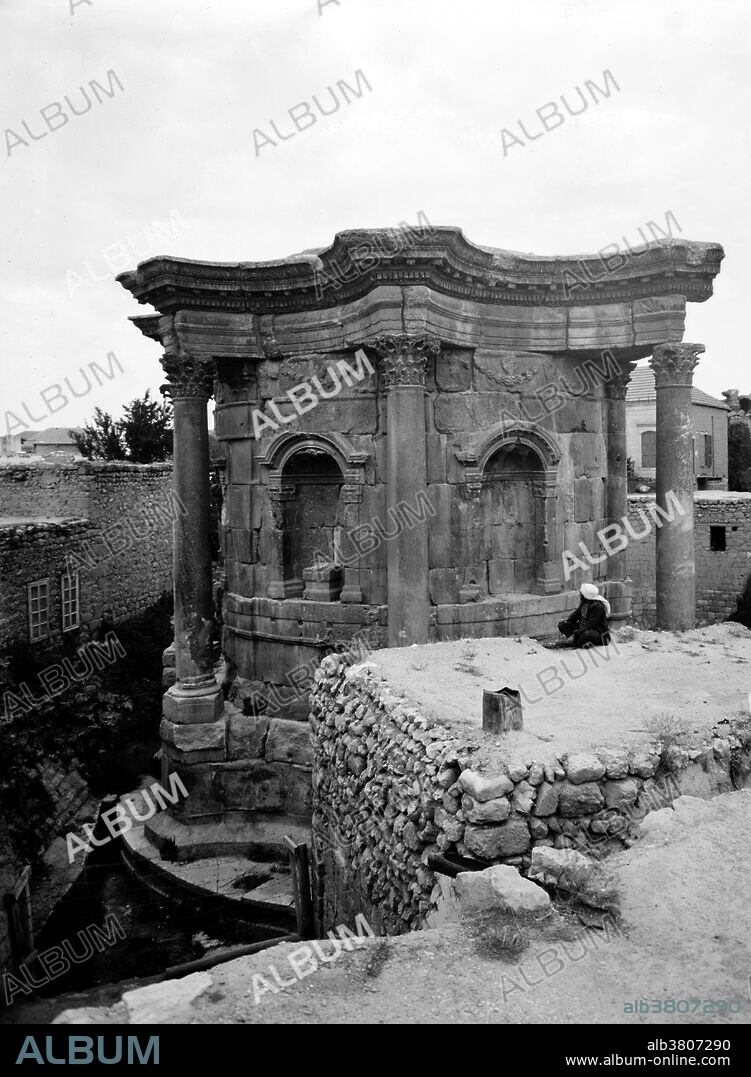alb3807290
Temple of Venus, Baalbek, 1936

|
Zu einem anderen Lightbox hinzufügen |
|
Zu einem anderen Lightbox hinzufügen |



Haben Sie bereits ein Konto? Anmelden
Sie haben kein Konto? Registrieren
Dieses Bild kaufen.
Nutzung auswählen:

Titel:
Temple of Venus, Baalbek, 1936
Untertitel:
Siehe automatische Übersetzung
The Temple of Venus was added under Septimius Severus in the early 3rd century but destroyed under Constantine, who raised a basilica in its place. It lies about 150 yards rom the southeast corner of the Temple of Bacchus. It was known in the 19th century as El Barbara or Barbarat el-Atikah (St Barbara's), having been used as a Greek Orthodox church into the 18th century. Baalbek is a town in the Beqaa Valley of Lebanon situated east of the Litani River. After Alexander the Great conquered the Near East in 334 BC, the existing settlement was named Heliopolis. The city retained its religious function during Greco-Roman times, when the sanctuary of the Heliopolitan Jupiter-Baal was a pilgrimage site, and one of the largest sanctuaries in the empire. Starting in the last quarter of the 1st century BC (reign of Augustus) and over a period of two centuries (reign of Philip the Arab), the Romans had built a temple complex in Baalbek consisting of three temples: Jupiter, Bacchus and Venus. On a nearby hill, they built a fourth temple dedicated to Mercury. Photographed by the American Colony (Jerusalem) Photo Department, 1936.
Persönlichkeiten:
Bildnachweis:
Album / LOC/Science Source
Freigaben (Releases):
Model: Nein - Eigentum: Nein
Rechtefragen?
Rechtefragen?
Bildgröße:
3300 x 4500 px | 42.5 MB
Druckgröße:
27.9 x 38.1 cm | 11.0 x 15.0 in (300 dpi)
Schlüsselwörter:
 Pinterest
Pinterest Twitter
Twitter Facebook
Facebook Link kopieren
Link kopieren Email
Email
